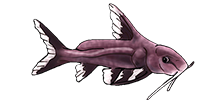https://doi.org/10.1038/s41598-022-17036-y
https://www.nature.com/articles/s41598-022-17036-y
Abstract
Bacteria in the Shigella genus remain a major cause of dysentery in sub-Saharan Africa, and annually cause an estimated 600,000 deaths worldwide. Being spread by contaminated food and water, this study highlights how wild caught food, in the form of freshwater catfish, can act as vectors for Shigella flexneri in Southern Kenya. A metatranscriptomic approach was used to identify the presence of Shigella flexneri in the catfish which had been caught for consumption from the Galana river. The use of nanopore sequencing was shown to be a simple and effective method to highlight the presence of Shigella flexneri and could represent a potential new tool in the detection and prevention of this deadly pathogen. Rather than the presence/absence results of more traditional testing methods, the use of metatranscriptomics highlighted how primarily one SOS response gene was being transcribed, suggesting the bacteria may be dormant in the catfish. Additionally, COI sequencing of the vector catfish revealed they likely represent a cryptic species. Morphological assignment suggested the fish were widehead catfish , which range across Africa, but the COI sequences from the Kenyan fish are distinctly different from C. laticeps sequenced in West Africa.





